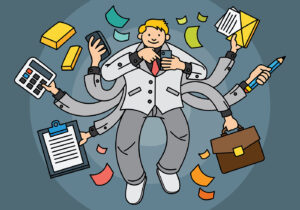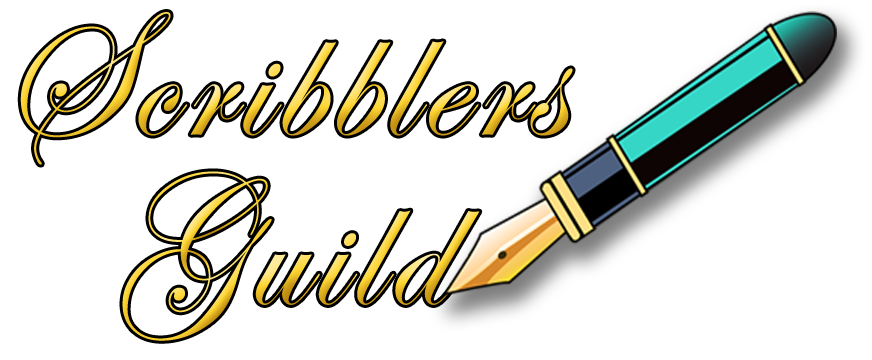Breaking the Procrastination Habit

First, let’s see if we can figure out what procrastination is and why we do it. Where does it come from? What purpose does it serve?
Procrastination has been described as “a voluntary delay of an intended act despite the nagging awareness that we’ll pay for it later”.
Even though we know avoidance is a self-defeating coping mechanism, it feels better in the moment to turn our backs on what we know to be the right choice in favour of something that’s less emotionally challenging.
Procrastination and avoidance act as short-term mood improvements. They’re immediately gratifying. They allow us to escape the proposed task and its associated negative emotions like anxiety, frustration, resentment, or boredom, but the task doesn’t go away. And we don’t have the motivation to overcome our procrastination, because the immediate gratification outweighs the long-term value of completing the task.
One study showed that students who engaged in creative tasks for fun were more likely to continue repeating the activity, produce more innovation and experience more enjoyment than those who were offered a reward for the completion of the task.
This suggests that, despite the concept of bonuses and rewards for the performance of tasks in business, creative activity is much more likely to result in an innovative solution completed well and on time if the activity itself is intrinsically rewarding, challenging and not beyond the skill set of the individual performing the task.
Rewards vs. Bribes

So perhaps we need to define what we mean by “rewards”.
I think the problem with the idea of rewards for a task well done carries with it a nagging sense of guilt. Extrinsic rewards for a job we’ve already committed to doing can serve some purpose to help motivate us — the promise of a walk after we’ve finished the next chapter or a cup of tea when our timer runs out — but on some level it feels like bribery, a subconscious extortion we inflict on ourselves to get the job done.
There’s a sleazy feeling to it, so, though the “reward” might motivate us in the short term, in the longer term, it adds to our burden of guilt, shame and self-loathing, which, once again, pops up as procrastination the next time we have to perform a similar task. If the job is predicated on getting a reward, it negates the intrinsic value of the work itself. If a reward is necessary to complete the job, we must ask if the job is one we even want to complete, and all too often the subconscious response is “no”.
Sometimes, the work is a necessary evil, a step on the way to a greater good. For example, today I need to wash down a carpet because my dog “had an accident” overnight, and the room smells of urine. I could promise myself some chocolate or a glass of wine as a treat after it’s done, but it’s still an annoying and disgusting job I don’t really want to do. However, the doing of it will mean a room I can enjoy being in. The end result — a clean living room — is its own intrinsic reward. The treat isn’t necessary. Nice, but not motivation enough in and of itself to make me want to do it.
Reciprocity
Often, these rewards are offered for jobs that others want us to do. Payment for work that they don’t want or don’t know how to do is a legitimate “reward” sometimes accompanied by “bonuses”, in order to incentivize more or better work.
But it’s the responsibility of the person doing the work to gain satisfaction from the work itself. Payments and rewards alone are not enough motivation. The work must appeal on some level to the person doing it. Otherwise, the result will never be as good or as timely as it might have been. Reluctance and procrastination will always interfere unless there is some intrinsic satisfaction in doing the job well.
So, perhaps a better “reward” might be a significant, measurable endpoint to the job itself. Typing “The End”, or putting a penny in a jar at the end of a writing session can be a ritualistic part of the task or project, rather than an add-on when the work is completed. This type of reward is significant because it’s closing an open loop — a mental unanswered question which has been resolved. And physiologically, that delivers the same kind of dopamine hit, a shot of “feel-good”, similar to the satisfaction of eating chocolate, levelling up your video game, hearing a great punch line, or receiving a compliment or bonus.
Transitions, Open Loops and Flow State

All too often, we attempt to multi-task, but we are not really capable of doing more than one thing at a time. Even those who juggle many tasks at once are not truly doing them at the same time. These people switch, often quite rapidly, between tasks, but there is always a period of transition and adjustment between them as they attempt to close the open loops associated with the previous task before turning their attention to the new item.
When we engage in creative tasks, we can sometimes achieve what is called the Flow state. According to psychologist Mihály Csíkszentmihályi, there are ten factors that accompany the experience of flow. While many of these components may be present, it is not necessary to experience all of them for flow to occur, but if too many of them are absent, our focus on the task is fragmented. Here are the ten factors that contribute to and characterize the Flow experience:
- The activity is intrinsically rewarding.
- There are clear goals that, while challenging, are still attainable.
- There is a complete focus on the activity itself.
- People experience feelings of personal control over the situation and the outcome.
- People have feelings of serenity and a loss of self-consciousness.
- There is immediate feedback.
- People know that the task is doable and there is a balance between skill level and the challenge presented.
- People experience a lack of awareness of their physical needs.
- There is strong concentration and focused attention.
- People experience timelessness, or a distorted sense of time, that involves feeling so focused on the present that you lose track of time passing.
So, if we have not yet closed all the open mental loops of a previous task, it would seem that one or more of these factors may be missing when we contemplate taking on a new task or project. Perhaps, if we can figure out exactly where we get stuck or sidetracked, we can find a way to bypass our mental blocks entirely and enter Flow more easily.
The Limbic System (Lizard Brain), Familiarity and Short-Term Gratification
It all comes down to the limbic system, which has evolved to keep us safe by alerting us to danger. Danger is anything new or difficult, unknown or confusing. When we face a new task, one which we haven’t done before, or one we know will include unknowns and lack of clarity, our immediate, instinctive response is “Flight or Fight!”, so we avoid it, even if it has the potential to improve our current situation. Better the perils we know than the ones we don’t.

Creative people tend to build rituals around the creation of their work. These rituals provide stability and familiarity in a world that seems out of control. Writers have a favourite chair or totem next to their notebook or computer, or start with a cup of tea or coffee to signal the brain that it’s time to begin. Athletes have special socks or items of clothing, superstitions that help them believe in themselves. Some actors, musicians and celebrities have written into their contracts that certain items must be waiting in their dressing rooms. These items provide them with a reliable anchor in the midst of chaos.
Human beings crave familiarity. But staying in a situation because it’s comfortable, even when it’s not optimal, can create resentment and frustration towards others because we can’t bring ourselves to make the necessary changes. We can’t face our own fear and shortcomings. We’re unable to see the future so the past is all we have for making choices, and if our choices have been poor in the past, chances are, they won’t work for us in the future. On some level we know this, which means we second-guess ourselves, we lack confidence and we try to avoid any situation that will “inevitably” end badly.
Commitment and Long-Term Gratification
But the longer we put off our dreams and the work that they require, the less chance we have of making them a reality. Commitment is a critical component —likewise the determination to stick to our choice until we break through the mental and emotional resistance and change our way of thinking.
So, if we go into a big project knowing this ahead of time, and keep it in the forefront of our minds when things get tough, we’ll have a much higher chance of success, even if success doesn’t look quite the way we expected.

According to the original “marshmallow test” of the 1960’s, children who displayed an ability to delay gratification for longer periods of time went on to perform better as adults, achieving better education, higher status and more income, due to a greater ability to focus. So, why, if we know this, don’t we simply buckle down and forge ahead?
It’s because we categorize the job at hand as too big, too hard, too confusing, too incomprehensible, too boring. We decide in advance that we don’t have the time, the resources, the skills or the patience to finish the whole thing. We put off large projects because they’re simply too overwhelming and promise to get back to them “someday”. But someday never comes, so, in addition to beating ourselves up about not doing it now, we end up regretting that we never did get around to doing it at all. This is compounded when the task has been assigned by someone else and isn’t even our own choice in the first place.
So, why do we procrastinate? Avoidance of discomfort? Steering clear of the dangerous unknown? Distaste or boredom regarding the job at hand? Resentment at having to do the work at all? Guilt or shame over our previous and often lengthy procrastination?
It may be one or more of these subconscious triggers, but often it’s because we get stuck in the transition phase from one task to another that we procrastinate, because we haven’t yet let go of a previous task, or not all of it.
It’s our transition times that are the most vulnerable to procrastination.
Wouldn’t it be great if we could train ourselves to overcome procrastination and tackle the job at hand, even if we don’t really want to?
Procrastination is a habit. It’s a thought process we’ve built up over the years to avoid discomfort, but it doesn’t serve us, because it prevents us from achieving all we could accomplish.
And because it’s a habit, it’s something we can change.
- Step one is recognizing when we’re procrastinating.
- Step two is committing to changing our habit of avoidance.
- Step three is completing our transitions.
- Step four is taking action.
![]()
How to Bust Through Procrastination
Step one is recognizing when we’re procrastinating, which isn’t always easy.
When we think about sitting down to write, or imagine starting a big project, our limbic system kicks in, saying, “That’s too hard, too big, too scary. Big, incomprehensible, unknown equals dangerous, so best to avoid it.” And we end up washing the dishes or reading a magazine or making soup or mowing the lawn.
One good way to begin the recognition process and overcome this mental misinformation is to keep a daily record, a journal of our activities. Most of us have a morning routine which we follow by rote. We’ve done it so often that it’s become a habit we don’t even think about. This is usually a habitual sequence of actions which set us up for the rest of the day. We also have an evening routine which helps us settle down for the night.
But in between, we do hundreds of little jobs and pieces of jobs, chores, daydreaming, preparing food, eating, cleaning up, travelling, conversation, studying, thinking and so on…
What if, every time we got to the end of each different task, we wrote down what we did, what we thought about what we’d done and how we felt about what we’d done?
If you want to try this for yourself, CLICK HERE for a PDF Worksheet that you can print out. Try it for a week.
If you did this for just seven days, you’d have a pretty accurate assessment of what you did, when and why you did it. You could pinpoint all the places you decided to do something else instead of tackling the important work of reaching for your goals. You could also figure out how much time you actually spend on a task, rather than the amount of time you think you spend on it. You could begin to uncover the self-sabotaging thoughts that trigger your procrastination.
Step two is committing to changing your habit of avoidance. Honestly commit to changing your avoidance habit. It’s not enough simply to recognize the moments when you go off-track. Recognition is only the first step. The next is making better choices. You must commit to changing your habitual behaviours to ones which better serve you.
When you start a project, task or job, you need to understand how much time you actually spend on that task. By noting and recording the actual times you’ve spent on various tasks, your timesheet will give you an accurate assessment of how many times you transition between one task and the next.
Step three is completing your transitions. It’s your transition times that are the most vulnerable to procrastination. The spaces between the lines, the silence between the notes. The transitions between tasks are where the limbic system butts in and says, “You don’t want to do that now, you’re not really finished with this task. Let’s go do something else while we think about this a little longer.” And once again, you’re off on a comfy, familiar tangent, while the lizard brain has kept you from the scary unknown.
But now that you have a list of all the things you did, thought and felt, and all the transitions between your multitude of tasks, that list can provide you with the information you need to change your behaviour. Keep this time sheet or journal next to your workspace and note down every time you transition — mentally or physically stepping away from the job at hand.
This is particularly important when you transition between tasks at work or doing chores and errands, personal projects and hobbies. If you don’t “close out” your thinking about a task or project when you’ve finished with it, part of your mind continues to worry away at it, stealing time and attention from the next project. So when you switch projects, make a note in your time-sheet or journal and finish your thought process.
Step four is taking action. When you know your most vulnerable moments, those times you succumb to procrastination, and when you commit to changing your behaviour, you’ll begin to see changes in your habits. You’ll spend more time taking action on the things that are most important, instead of dithering around with the little things that help you feel better about yourself, as if you’ve accomplished something, but in fact are only busy work. By taking even small action on your goals, you’ll gain greater clarity and focus, because taking action provides clues pointing you towards the next steps you’ll need to take.
The only way to gain clarity and focus is to do the work. Thinking about it is merely dreaming. Doing it is what makes it happen.
Conclusions
The hardest part of overcoming procrastination is starting.
The next hardest part is staying focused.
When you track what prevents you from staying focused, it becomes easier to recognize it the next time it happens. Eventually, you’ll recognize that you’re procrastinating almost as soon as it happens, so all you need to do then is make a conscious decision and choose the more effective behaviour.
And the more you do that, the more it becomes a habit.
If you want to try this for yourself, CLICK HERE for a PDF that you can print out. Try it for a week. Find your transitions and procrastination triggers, so that you can change your habits.
Happy Writing!

Beverley Hanna
Trained as an artist in the late 1960’s and early 1970’s, I was one of the first creatives to be employed in the computer graphics industry in Toronto during the early 1980’s. For several years, I exhibited my animal portraiture in Canada and the U.S. but when my parents needed care, I began writing as a way to stay close to them. I’ve been writing ever since. I run a highly successful local writer’s circle, teaching the craft and techniques of good writing. Many of my students have gone on to publish works of their own. I create courses aimed at seniors who wish to write memoirs, with a focus on the psychology of creatives and the alleviation of procrastination and writer's block.
